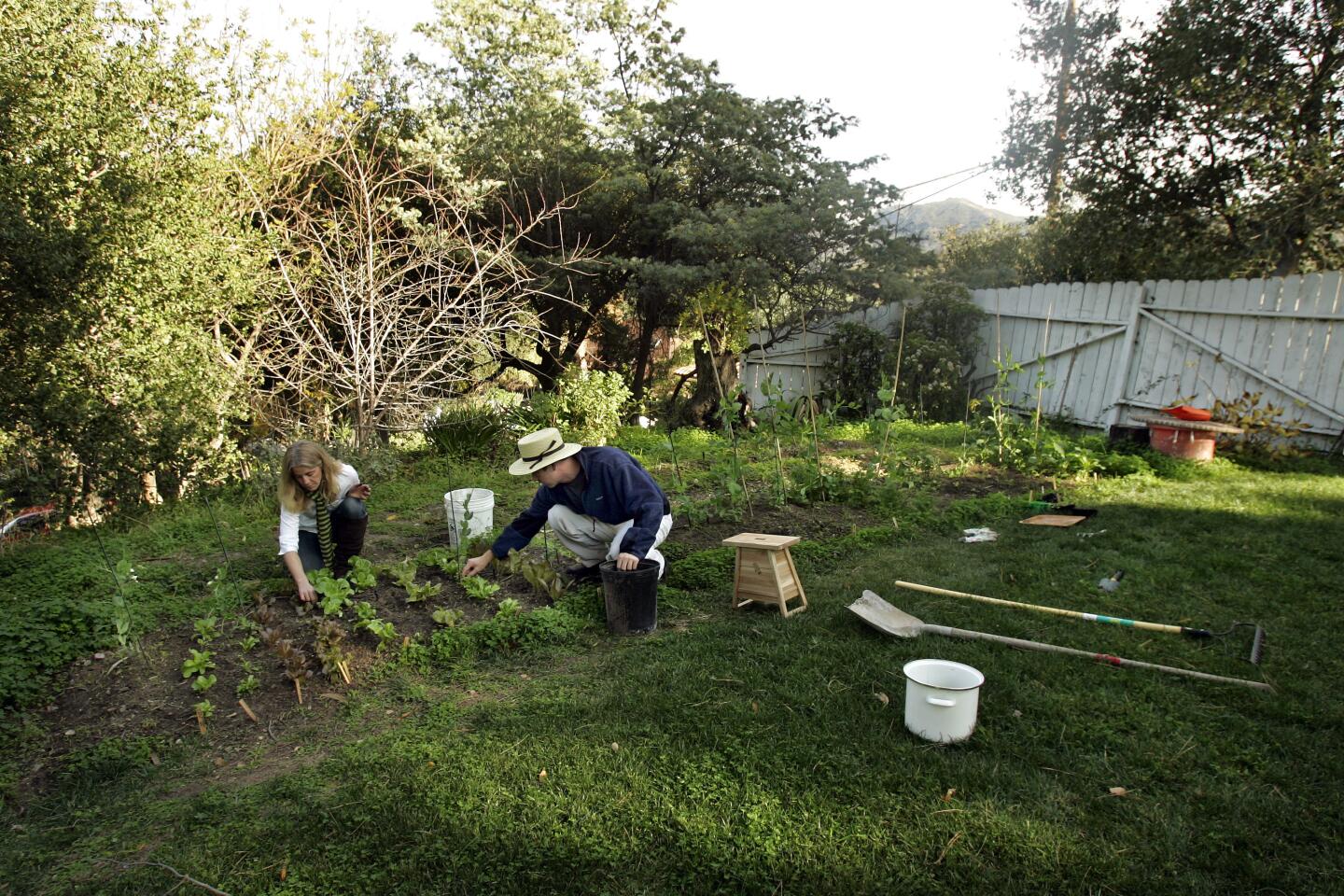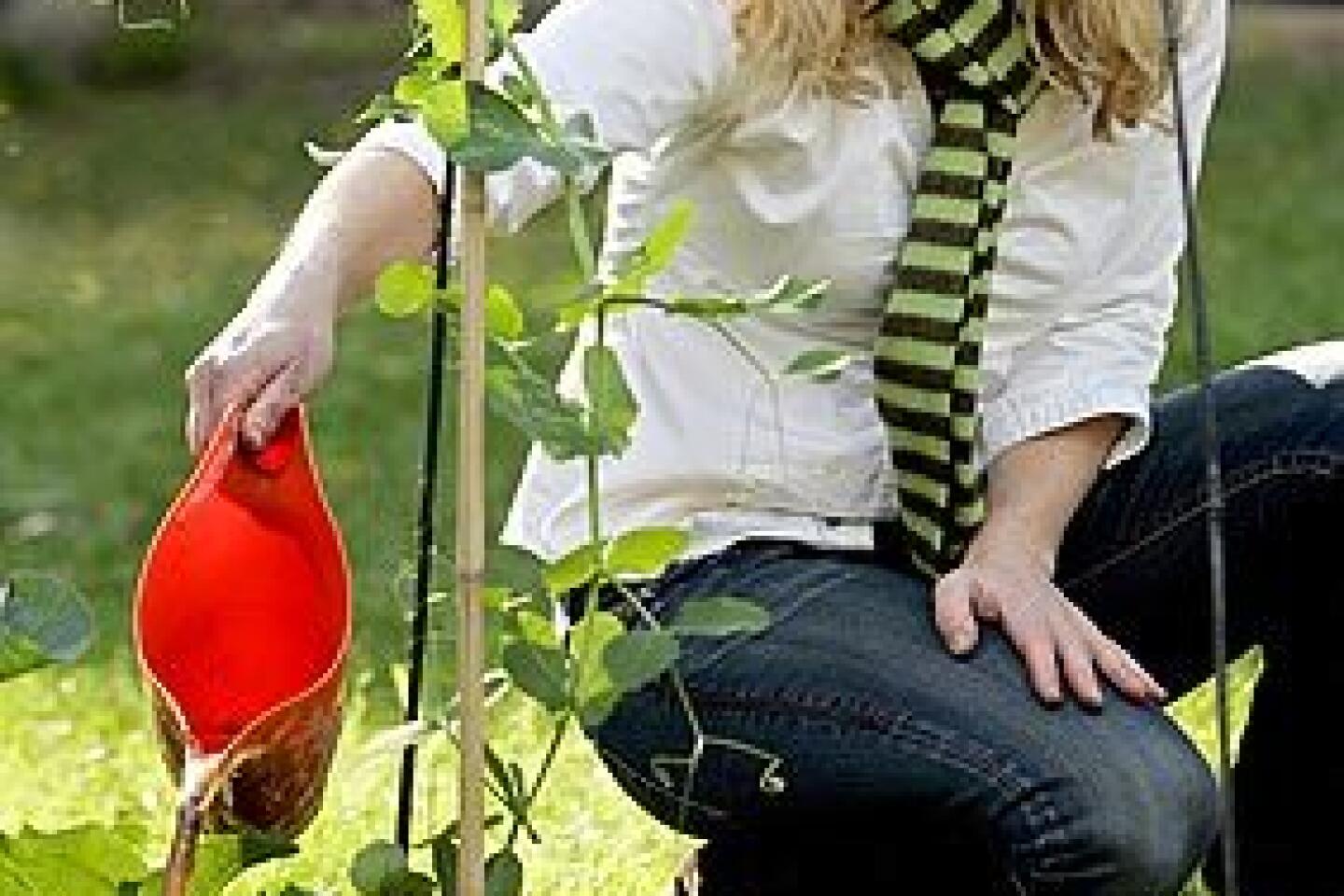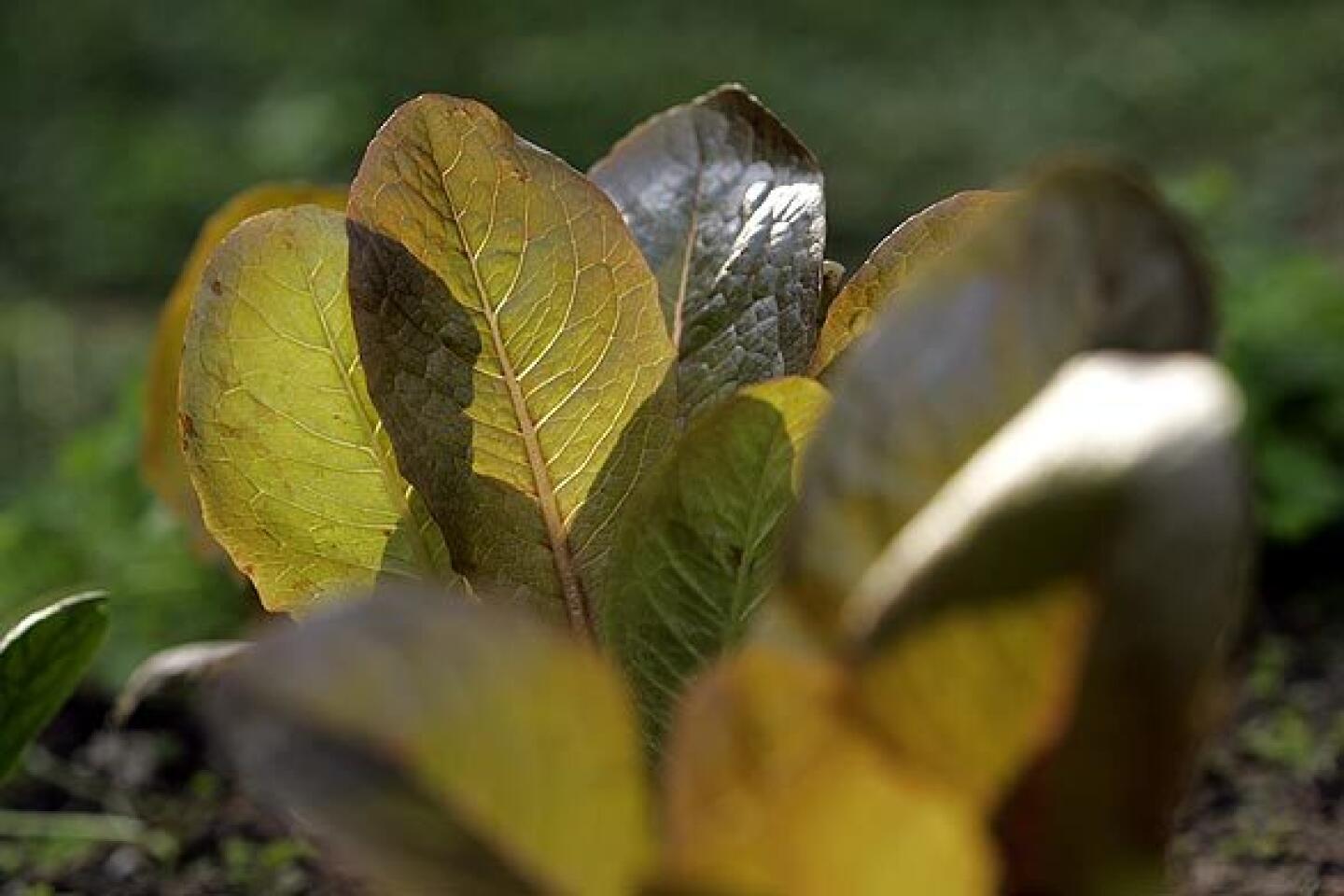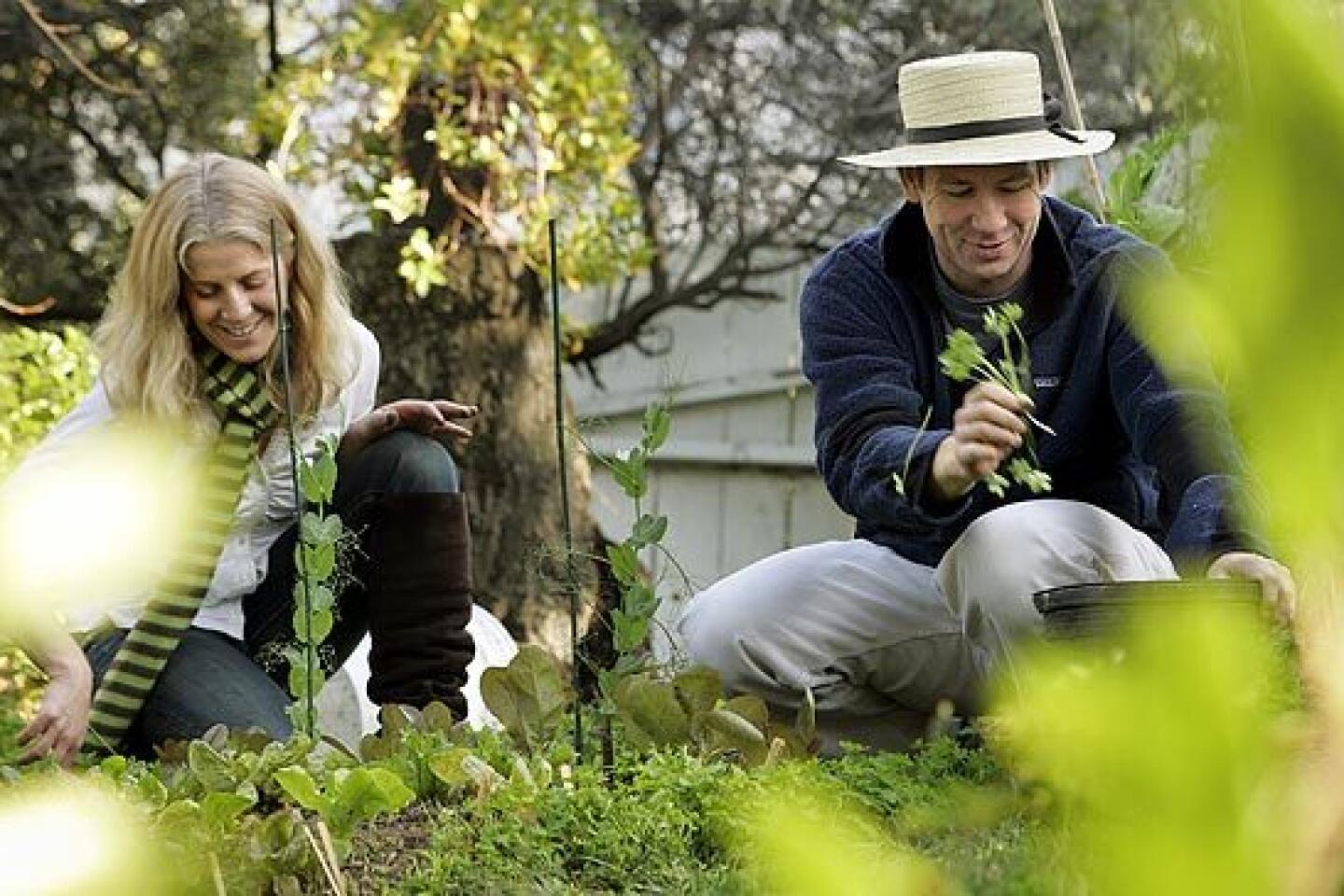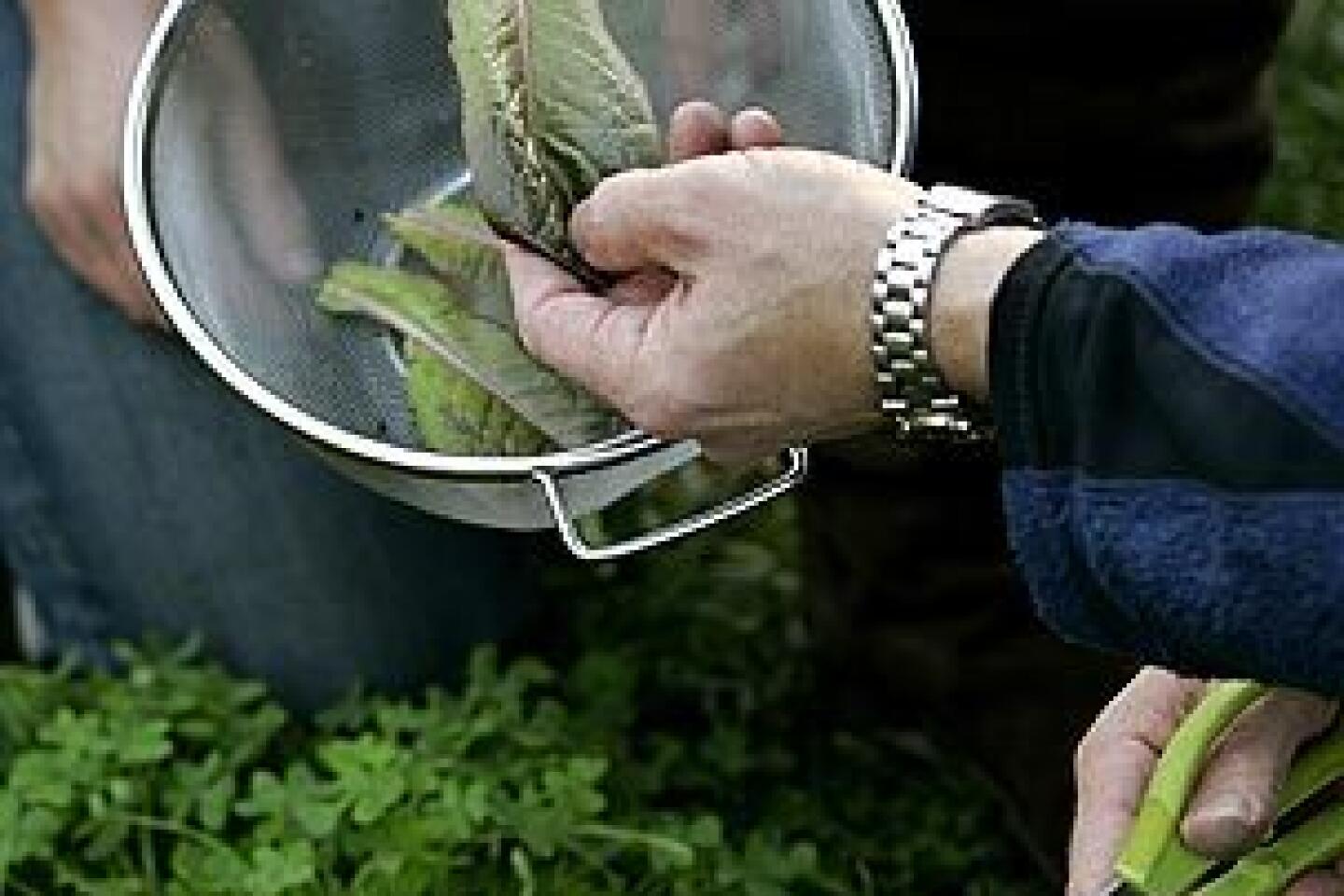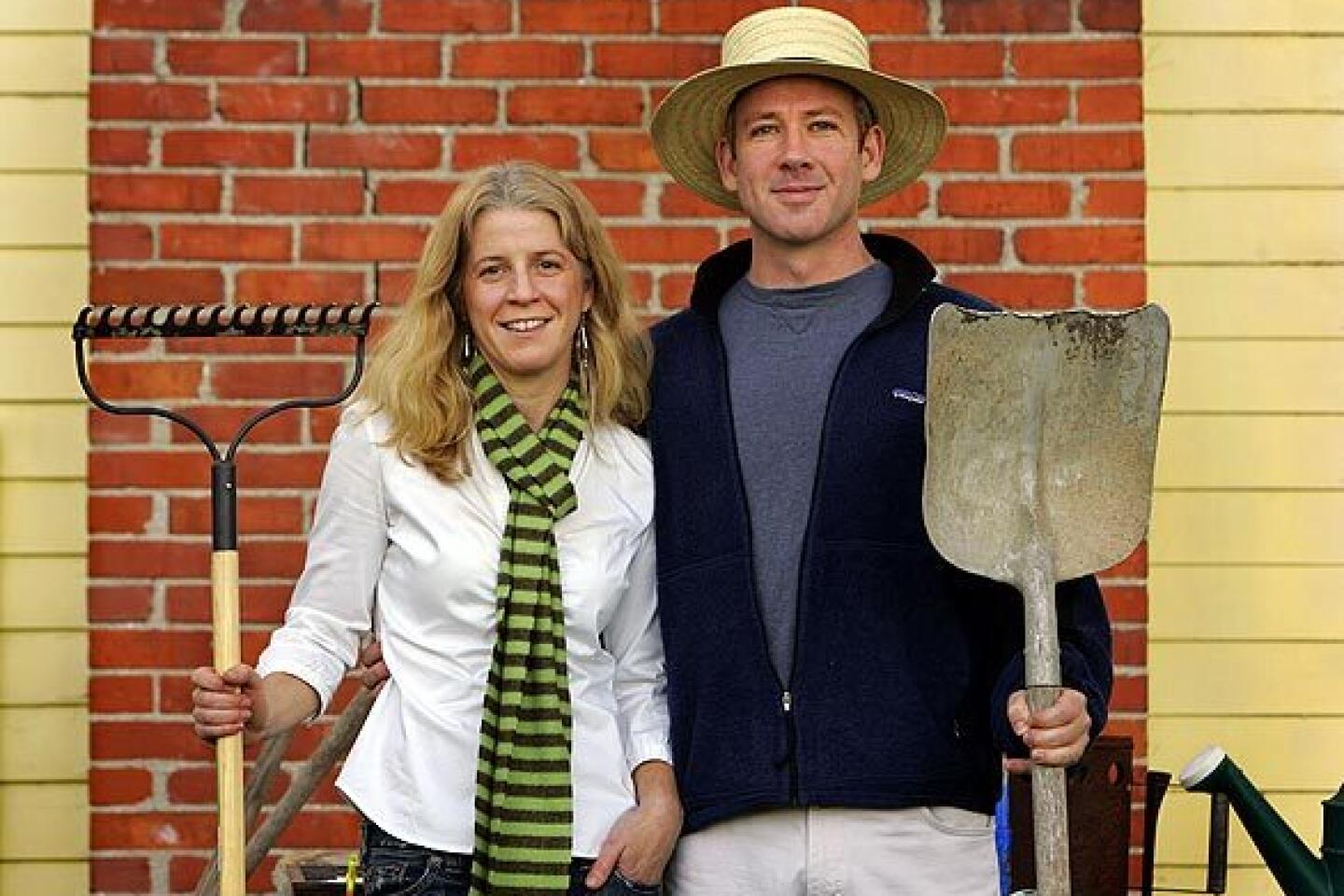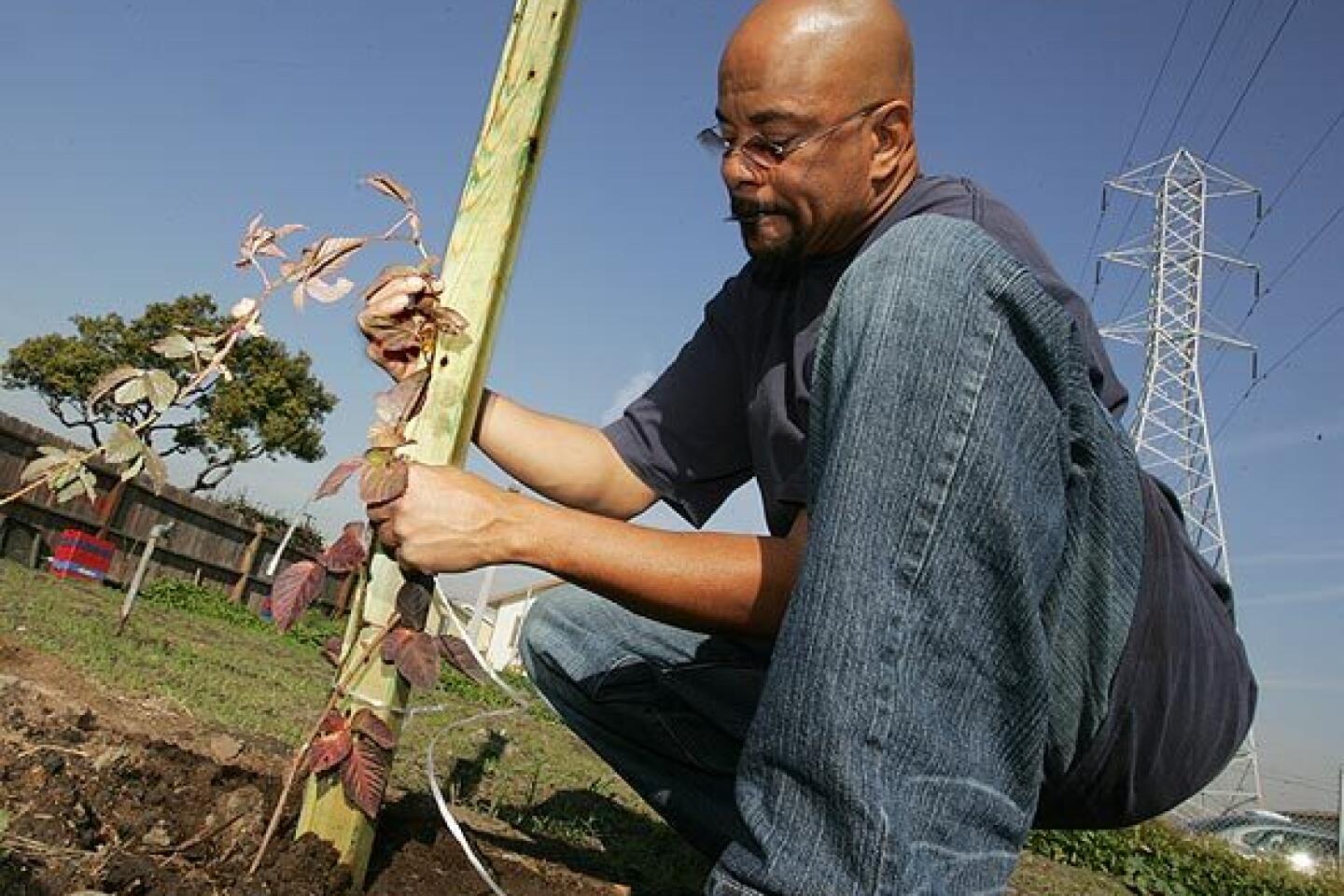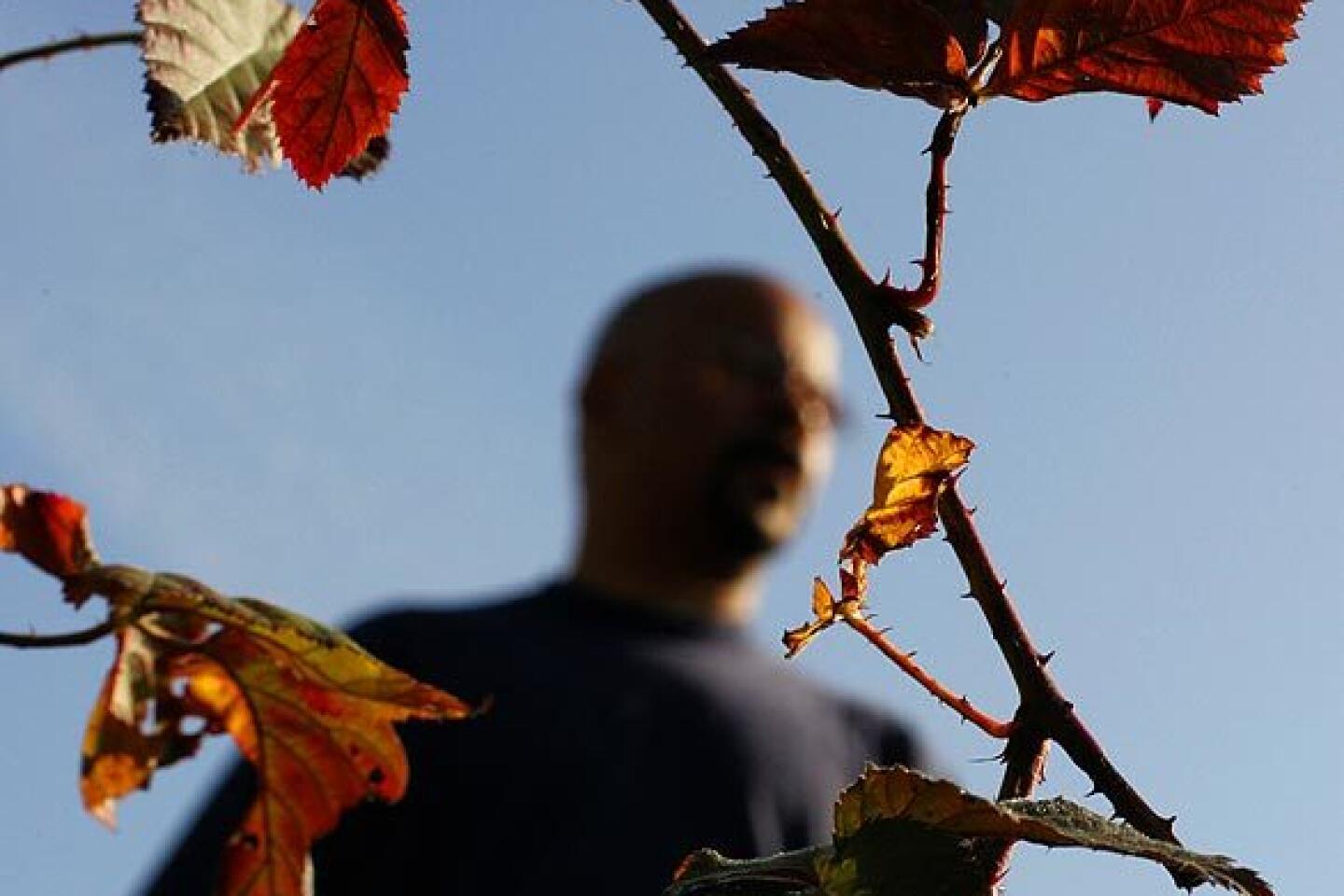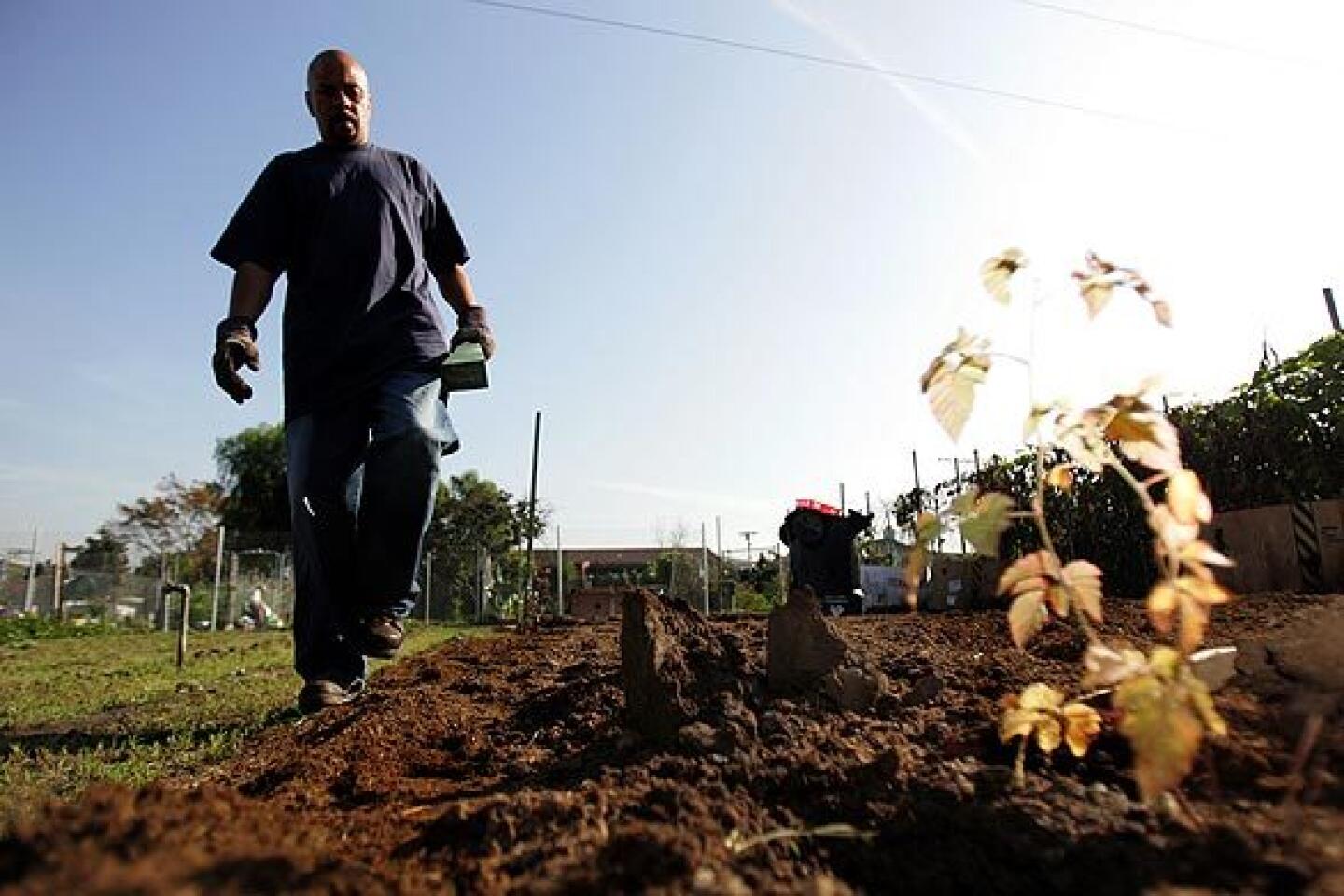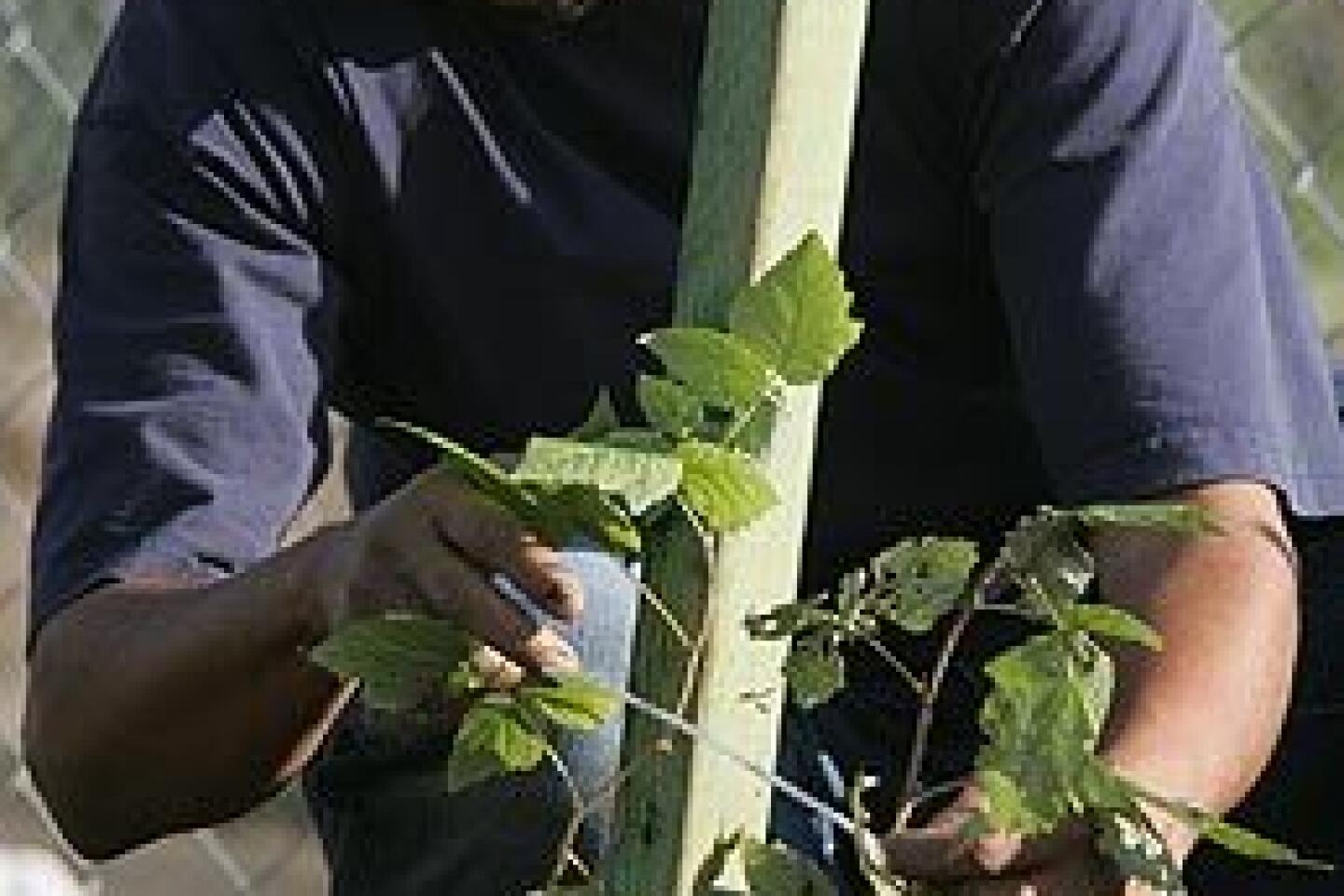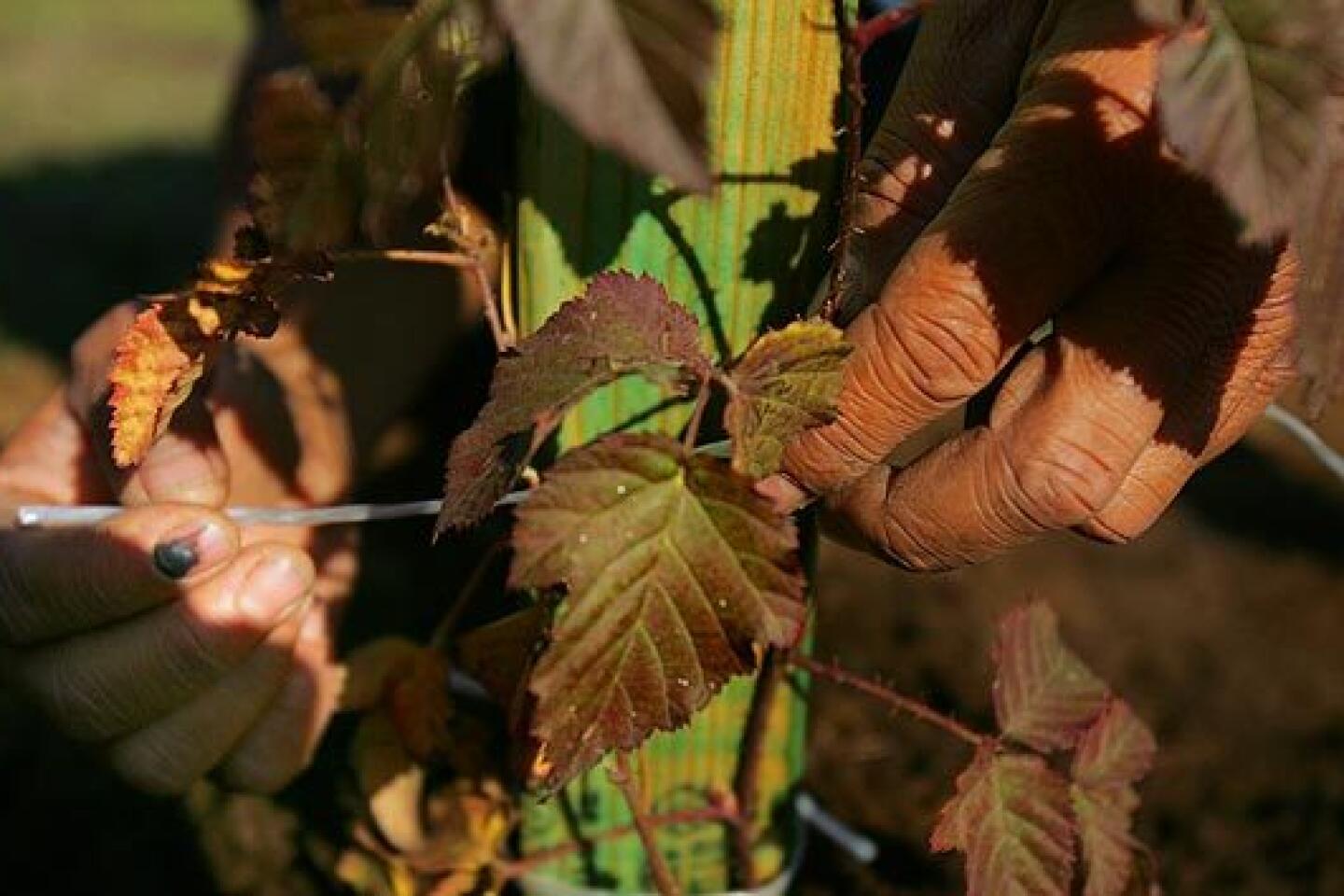Victory gardens sprout up again
- Share via
These days, digging some holes and planting a little lettuce or a few beets is a political act. Just ask Julie Stern, who shares a backyard organic garden with her neighbor in Topanga Canyon. Stern worked at the polls on election day. “There’s a feeling you had,” she said. “You saw your neighbors, and you felt good about what you did.” Growing food, she added, “I sort of do feel the same way.”
Or ask Sandra Young, who put two raised beds in the neatly kept frontyard of her Westside house.
“For me, it’s much more a political question than a gardening question,” Young said, adding that when her family moved to the house 10 years ago, she asked: “What are we doing with all this grass?” Though she claimed she had too little time to be a top-notch gardener, last month beets, carrots, lettuces, basil and parsley were growing steps from her front door. Gardening, she said, is one thing she can do, “a step in the right direction.”
Decades ago, the victory gardens planted at the behest of the federal government helped the United States cope with food shortages during World War II. (In World War I, they were liberty gardens.) By 1943, Americans planted more than 20 million victory gardens -- at homes and schools and in parks -- that were reported to produce 8 million tons of food that one old film called “America’s hidden weapon.”
Now, in community gardens and backyards, and of course on the Internet, a new victory garden movement has captured the attention of people who want to lessen their reliance on mass-produced or imported food, reduce their carbon footprint, foster a sense of community or save on their grocery bills in a fractured economic climate.
When the National Gardening Assn. compiles its annual data later this month, market research director Bruce Butterfield expects to see a 10% rise in food gardening for 2008. Based on anecdotal evidence and trends in past recessions, he expects even stronger growth this year.
“People want to have more connection with their own world,” said Yvonne Savio, manager of the Common Ground Garden Program for the Los Angeles County UC Cooperative Extension, which includes a master gardener program that aims to help poor people grow food. Applications, she said, have doubled in the past three years.
Jimmy Williams, who runs Hayground Organic Gardening from his Los Angeles house, has 6,000 to 10,000 seedlings on the roof of his small garage alone. His business -- selling seedlings and designing gardens -- has quadrupled in the last year, he said. Why?
People find that food tastes better if they grow it themselves, he said. Plus, there’s the economy. “They’re worried,” Williams said. “They don’t know what’s going to happen.”
The desire to grow food, however, crosses economic lines. Some people are struggling financially, but others simply prefer lettuce over lawns. Do-it-yourself types are eager for delicious, healthful food close at hand.
“Even super-rich people who can afford to send people to any store anywhere -- they even want gardens,” Williams said.
Christy Wilhelmi, who teaches gardening at Santa Monica College and in her Mar Vista backyard, notes that growing your own makes the shortest path possible from field to table, eliminating the need to transport crops, sometimes thousands of miles. Behind her house, she gardens in eight raised beds, growing heirloom varieties of asparagus, strawberries, tomatoes and more to do her part to increase biodiversity. She would like to add chickens. They would eat kitchen scraps and some garden pests, and they would provide eggs.
::
“It’s very cyclical,” said Charlie Nardozzi, senior horticulturist with the National Gardening Assn., which is based in South Burlington, Vt. After the second World War, gardening became mostly a hobby in the ‘50s and ‘60s. But then came the “back to the land” movement of the 1970s, when growing food again had serious purpose.
It petered out in the ‘80s and ‘90s but has surged again today, buoyed by philosophical issues as well as economic ones, Nardozzi said. Seed companies have reported running out of some vegetables, and demand is higher than it’s been in years, he said.
At the W. Atlee Burpee & Co., sales of seeds for vegetables and herbs last year rose 40% compared with 2007, the company said. A spokeswoman cited spikes in food and gas prices, as well as worries about food safety and interest in organic food.
In the 1940s, Jean-Marie Putnam and Lloyd C. Cosper’s book, “Gardens for Victory,” emphasized the financial savings: “Those dollars can go into the bank account, or you may patriotically transform your beet, onion and cabbage savings directly into Defense Bonds.”
Today there is a confluence of concerns -- a victory garden movement with a 21st century agenda, eager to involve people from the White House to your backyard.
“It’s the new call to service,” said Mary Tokita, who has a plot at a community garden in Eagle Rock and is active on the Los Angeles Community Garden Council. More community gardens are opening, and rooftops are being planted downtown, she said. “It’s very, very heartening.”
The movement has every potential to feel as urgent as the victory gardens of old, said Blair Randall, director of the Garden for the Environment, a demonstration garden in San Francisco where classes are offered in growing and composting.
“There is a greater diversity of reasons -- economic, environmental, people who care about their food,” he said.
::
Julie Stern and Christo Brock were drawn to growing delicious food, and both frequent farmers markets and Whole Foods. Stern can’t wait to grow the prized ‘San Marzano’ tomatoes next summer. Though neither is poor, Stern recently quit a high-paying job to devote time to fiction writing and likes the idea of lower grocery bills.
“I feel fortunate that I can pay a premium to do what I think is right,” Brock said. At the same time, he said, “growing your own garden is frugal. I like that.”
In October, he and Stern started leeks, peas, beets, carrots and a few other things, all grown organically in Stern’s Topanga Canyon yard. They’re also making compost and steeping a manure “tea” to be used as liquid fertilizer.
Brock, a documentary filmmaker, doesn’t think of himself as a patriotic gardener, but he is worried about the future of the planet.
“The produce from Chile -- it’s not ripe or it has no flavor. And now it has a big carbon footprint,” he said.
Other converts can be found at community gardens, many of which were established during L.A. Mayor Tom Bradley’s administration, said David King, a board member of the American Community Gardening Assn. One common goal was “good, clean, wholesome food for under-served populations.”
Most of the gardens are in middle-class or low-income areas. Today, community gardeners are motivated by economics as well as interest in the way food is grown, said King, who tends the 1-acre garden at Venice High School.
“There is a positive connection between putting their fingers in the soil and their own mental or spiritual well-being,” he said.
Rudolph Forrest, a 51-year-old hospital respiratory technician, has been out of work for nine months. In September, he got a plot at his neighborhood community garden, the Stanford Avalon garden in Watts. Since then, he’s been working his soil, adding compost to make it rich and organic. A vegan, he plans to eat from it, and he hopes to start a business using his crops for smoothie ingredients. He plans to grow strawberries, melons, grapes and more.
Like many of the approximately 70 community gardens in Los Angeles, this one has a waiting list. It sits near Locke High School, on a narrow stretch of Department of Public Works land under power lines. The gardeners here have relatively big plots, 10 feet by 30 feet. They pay $11 a month for water and maintenance, and some of them sell what they grow.
“It makes all the sense in the world for me to get a plot, grow my own food and live,” Forrest said one Sunday morning standing by his garden, while two crows chased a red-tailed hawk above. “This is a new reality. And I am actually excited.”
::
The new victory garden movement still is after the brass ring: a president calling on citizens to plant food, and a first family with a garden. The writer Michael Pollan, chef Alice Waters and plenty of others have called on the Obamas to follow the example of the Franklin D. Roosevelt family by planting a food garden to replace some of that pristine lawn at the White House. An online petition organized by the group Kitchen Gardeners International hopes to persuade President-elect Barack Obama to plant an organic garden on “the First Lawn.”
In addition to feeding White House residents, the food would be served to visiting dignitaries or go to shelters. So far, there’s no word on whether Obama will take the suggestion. “It would be so symbolic to tear up some of the lawn and put in vegetables,” said the gardening association’s Nardozzi. “It would be great.”
More to Read
Sign up for The Wild
We’ll help you find the best places to hike, bike and run, as well as the perfect silent spots for meditation and yoga.
You may occasionally receive promotional content from the Los Angeles Times.
